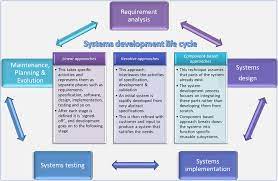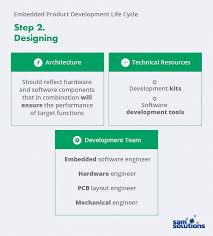Exploring the Role of Software Applications in Software Engineering
The Role of Software Applications in Software Engineering
Software applications play a crucial role in the field of software engineering, serving as the primary tools that enable engineers to design, develop, test, and maintain software systems. These applications are essential for streamlining the software development process and ensuring the delivery of high-quality products.
Key Functions of Software Applications in Software Engineering
Integrated Development Environments (IDEs): IDEs provide engineers with a comprehensive set of tools for writing, compiling, debugging, and deploying code. These applications enhance productivity by offering features such as code auto-completion, syntax highlighting, and version control integration.
Version Control Systems: Version control systems like Git enable software engineers to track changes to their codebase, collaborate with team members effectively, and revert to previous versions if needed. These applications help maintain code integrity and facilitate seamless collaboration within development teams.
Testing Tools: Testing tools such as JUnit and Selenium assist engineers in verifying the functionality and performance of their software applications. These tools automate the testing process, identify bugs early in the development cycle, and ensure that the final product meets quality standards.
The Impact of Software Applications on Software Engineering Practices
The use of software applications has revolutionized software engineering practices by enabling engineers to work more efficiently and collaboratively. These tools have facilitated agile development methodologies, continuous integration practices, and rapid prototyping techniques that accelerate the delivery of software products to market.
Future Trends in Software Applications for Software Engineering
As technology continues to evolve, we can expect software applications in software engineering to become more sophisticated and specialized. Emerging trends such as artificial intelligence-driven development tools, cloud-based IDEs, and low-code platforms are reshaping how engineers approach software development tasks.
In conclusion, software applications are indispensable assets for software engineers, empowering them to innovate, iterate rapidly, and deliver cutting-edge solutions to meet evolving market demands. By leveraging these tools effectively, engineers can enhance their productivity, collaboration capabilities, and overall success in the dynamic field of software engineering.
Understanding Software Applications in Software Engineering: Key Concepts and Examples
- What is software engineer applications?
- What is software application in software engineering?
- What are the 3 main types of software applications?
- What are examples of software applications?
- What is a software application and examples?
- What are software applications in software engineering?
What is software engineer applications?
In the realm of software engineering, the term “software engineer applications” refers to the specialized software tools and applications that are utilized by software engineers to design, develop, test, and maintain software systems. These applications encompass a wide range of tools, including integrated development environments (IDEs), version control systems, testing tools, and more. Software engineer applications play a pivotal role in streamlining the development process, enhancing productivity, and ensuring the delivery of high-quality software products. By leveraging these specialized tools effectively, software engineers can optimize their workflows, collaborate efficiently with team members, and navigate the complexities of modern software development practices with precision and expertise.
What is software application in software engineering?
In the realm of software engineering, a software application refers to a program or set of programs designed to perform specific tasks or functions on a computer system. These applications are meticulously crafted by software engineers to address various user needs, from simple utilities to complex enterprise systems. They serve as the building blocks of technology solutions, enabling users to interact with data, automate processes, and accomplish specific goals efficiently. In essence, a software application in software engineering embodies the ingenuity and expertise of developers in creating functional and user-friendly solutions that drive innovation and progress in the digital landscape.
What are the 3 main types of software applications?
In the realm of software applications in software engineering, one frequently asked question revolves around the classification of software into different types. When considering this question, it is commonly acknowledged that there are three main types of software applications: system software, application software, and programming software. System software serves as a foundational layer that manages hardware resources and provides essential functionalities for other software to run smoothly. Application software, on the other hand, caters to end-users’ needs by offering specific functionalities such as word processing, graphic design, or accounting. Lastly, programming software includes tools and environments that enable developers to create and modify other software applications effectively. Understanding these distinct types is crucial for comprehending the diverse roles that software applications play in the field of software engineering.
What are examples of software applications?
In the realm of software engineering, examples of software applications encompass a wide array of tools that serve distinct purposes throughout the software development lifecycle. Common examples include Integrated Development Environments (IDEs) like Visual Studio and IntelliJ IDEA, which provide a comprehensive platform for coding, debugging, and building software projects. Version control systems such as Git and Subversion enable teams to manage code changes efficiently and collaborate seamlessly. Testing tools like Selenium and JUnit assist in verifying the functionality and performance of applications. These examples highlight the diverse range of software applications that play vital roles in modern software engineering practices.
What is a software application and examples?
A software application, commonly referred to as an “app,” is a computer program designed to perform specific tasks or functions for end-users. These applications are created to address various needs, such as productivity, entertainment, communication, and more. Examples of software applications include web browsers like Google Chrome and Mozilla Firefox, productivity suites like Microsoft Office and Google Workspace, messaging apps like WhatsApp and Slack, social media platforms such as Facebook and Instagram, and video streaming services like Netflix and YouTube. Each software application serves a distinct purpose and offers unique features to enhance user experiences in different aspects of daily life and work.
What are software applications in software engineering?
Software applications in software engineering refer to the specialized tools and programs that software engineers use to design, develop, test, and maintain software systems. These applications encompass a wide range of functionalities, including integrated development environments (IDEs) for coding, version control systems for managing code changes, testing tools for quality assurance, and various other utilities that streamline the software development process. Essentially, software applications in software engineering are essential components that empower engineers to create innovative solutions, collaborate effectively with team members, and deliver high-quality software products to meet the needs of users and businesses.






